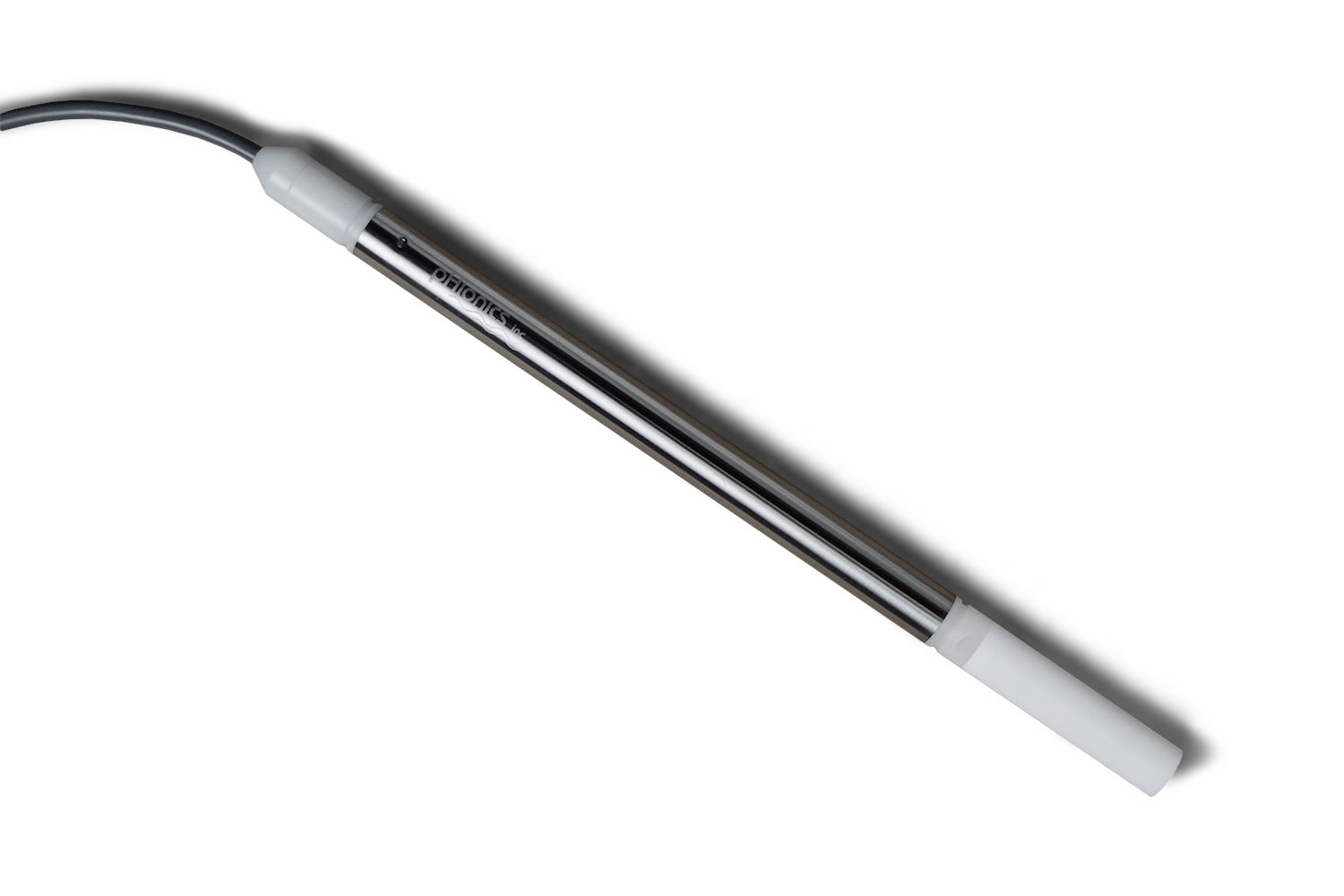pHionics STs Series Conductivity Sensor
BRAND: pHionics
Features
Stainless Steel Housing (Standard) or Ttanium For Harsh Chemical Conditions
4-cell electrode measuring conductivity, total dissolved solids (TDS), or salinity (6-42 PSU)
Stable electrode with anti-fouling guard
Secondary 0-50°C temperature sensor
Narrow diameter (0.75 inches or 1.9 cm)
Isolated to prevent electrical interference and protect connected devices
Durable, chemical-resistant housing and cable
Low power 4-20 mA signals
BRAND: pHionics
Features
Stainless Steel Housing (Standard) or Ttanium For Harsh Chemical Conditions
4-cell electrode measuring conductivity, total dissolved solids (TDS), or salinity (6-42 PSU)
Stable electrode with anti-fouling guard
Secondary 0-50°C temperature sensor
Narrow diameter (0.75 inches or 1.9 cm)
Isolated to prevent electrical interference and protect connected devices
Durable, chemical-resistant housing and cable
Low power 4-20 mA signals
BRAND: pHionics
Features
Stainless Steel Housing (Standard) or Ttanium For Harsh Chemical Conditions
4-cell electrode measuring conductivity, total dissolved solids (TDS), or salinity (6-42 PSU)
Stable electrode with anti-fouling guard
Secondary 0-50°C temperature sensor
Narrow diameter (0.75 inches or 1.9 cm)
Isolated to prevent electrical interference and protect connected devices
Durable, chemical-resistant housing and cable
Low power 4-20 mA signals
Conductivity Sensor Description
The pHionics STs Series™ Conductivity is a water quality sensor (sonde) designed to pair with a datalogger or RTU for real-time data capture. A narrow diameter allows the STs Series to go places others can’t while the chemical-resistant housing ensures the sensor can stay there for many years. Proprietary electrode technology provides stable measurements to reduce calibration frequency. All parts, including the cable, are easily replaceable without tools using pHionics patented pHiConn™ System, saving frustration and money.
In addition, isolation, differential amplification, and shielding ensure a strong signal with high signal-noise ratios, all while remaining low-power. These features make our conductivity sensor well-suited for applications such as groundwater monitoring, wastewater treatment, aquaculture, pollution monitoring, etc.
Applications
Groundwater Monitoring
Saltwater intrusion
Agricultural Runoff
Mining Pollution
Industrial Effluent Monitoring
Wastewater Treatment
Environmental Remediation
Aquaculture
Conductivity Sensor Specifications
Conductivity Sensor Output 4-20 mA
Conductivity Range 0-100,000 µS
Electrode Type 4-cell Transmitter
Type 2-wire Automatic Temperature Compensation 2% per °C
Power Supply Voltage 8-40 VDC
Response Time 95% < 5 seconds
Submersion Pressure Range 0-70 psi
Wetted Materials 316 SS, Delrin®, Viton™, PVDF
Length 14.50 in (36.83 cm) Width 0.75 in (1.90 cm) maximum
Weight (No cable) 0.50 lbs (0.227 kg)
Linearity ± 1.00% of full scale*
Accuracy ± 1.00% of full scale
Sensitivity ± 0.05% of full scale (After proper calibration)
Temperature Sensor Output 4-20 mA
Temperature Range 0-50°C
Accuracy ± 1°C Linearity ± 0.5°C
Power Supply Voltage 7-40 VDC
Cable Material Polyurethane
Type 4 conductor, Kevlar® reinforced, water blocked, shielded, twisted-pair wiring
Maximum Distance 3 miles Resistance per 1000 ft (304.8 m) 26 Ohms
Replaceable? Yes





